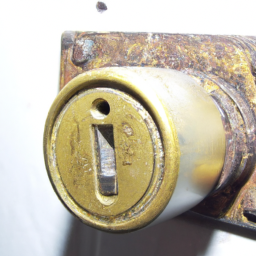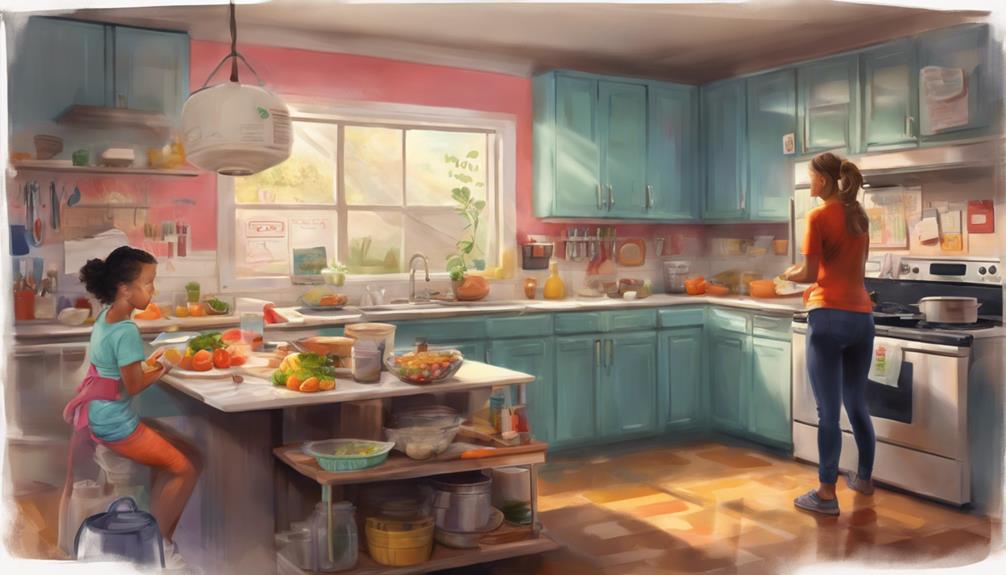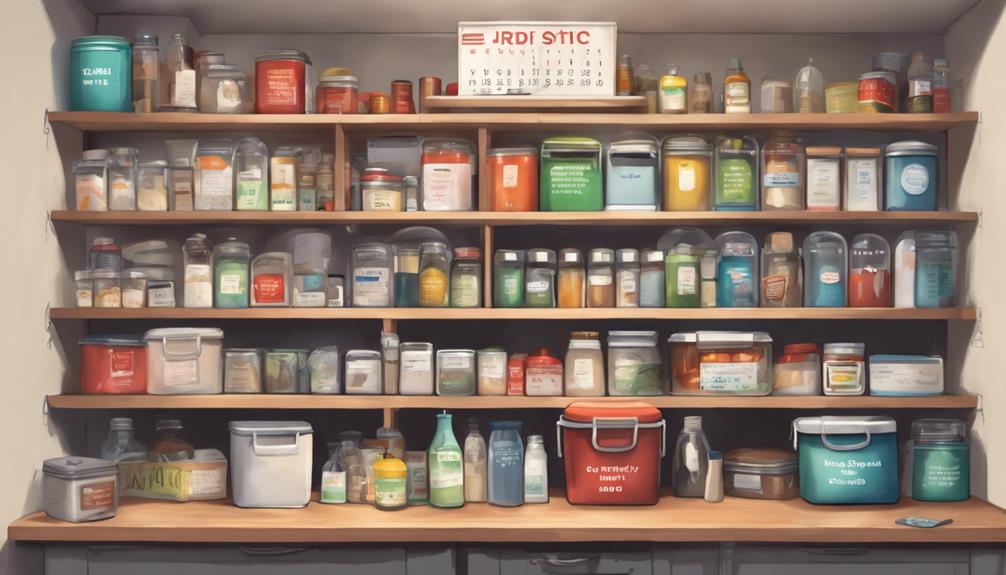As an Amazon Associate I earn from qualifying purchases.
Are you someone who likes to be prepared for anything that comes your way? Do you have a stockpile of supplies, just in case of an emergency? If so, then you might be a prepper! Prepping is all about being self-sufficient and ready for any situation. One important aspect of prepping is securing your home. In this article, we will discuss some tips for preppers who want to ensure that their homes are safe and secure.
When it comes to securing your home, there are a few key areas to focus on. The first is your doors and windows. It’s important to have solid, sturdy doors that are difficult for anyone to break through. Consider installing deadbolts and reinforcing the frame around your doors. For windows, you can use security film or install bars or grilles to prevent easy access.
Another important aspect of home security is your outdoor lighting. Adequate lighting around your property can deter potential intruders. Consider installing motion-sensor lights or keeping your porch and backyard well-lit at night. This not only provides added security, but it also helps you see if anyone is approaching your home.
Lastly, it’s crucial to have a reliable alarm system in place. This could be as simple as a DIY system or a more sophisticated one that is monitored by a security company. Having an alarm system not only alerts you of any potential threats, but it also serves as a deterrent to burglars and intruders.
In this article, we’ve only scratched the surface of home security for preppers. If you want to dive deeper and learn more, be sure to read the full article. After all, as a prepper, being prepared and keeping your home safe goes hand in hand. So, arm yourself with knowledge and take the necessary steps to secure your home today!
Securing Your Home: Tips for Preppers
Assessing Vulnerabilities
When it comes to securing your home, the first step is to assess the vulnerabilities that could potentially compromise the safety of your living space. Take a walk around your property and carefully examine all entry points, such as doors, windows, and even the garage. Look for any signs of wear and tear, damaged frames, or weak points that could be easily breached. Additionally, consider the layout of your property and identify any areas that may provide cover or easy access for intruders. By understanding these vulnerabilities, you can take the necessary steps to fortify them effectively.
Fortifying Entry Points
One of the most crucial aspects of home security is ensuring that all entry points are fortified and resistant to unauthorized access. Start with your doors by installing high-quality deadbolt locks and reinforced strike plates. Consider upgrading to smart locks that provide additional security features such as remote monitoring and control. Windows should also be reinforced with window locks or security film to prevent break-ins. For added protection, consider installing window bars or security shutters, which can further deter potential intruders.
Creating a Perimeter Defense
Building a perimeter defense around your property is an essential step in securing your home. Start by installing sturdy fencing around the perimeter of your yard, using materials such as metal or high-quality wood. Make sure the gate is well-constructed and locked securely. Consider adding thorny bushes or hedges near windows and along the fence line to create a natural deterrent. Additionally, motion sensor lights strategically placed around the perimeter can help deter intruders by illuminating any suspicious activity.
Installing Security Systems
Investing in a reliable security system is an effective way to enhance the safety of your home. Opt for a system that includes surveillance cameras, motion sensors, and a control panel that allows you to monitor and control your security remotely. Place the cameras strategically, focusing on entry points and high-risk areas. Make sure the signage indicating that your property is under surveillance is clearly visible, as it can act as a powerful deterrent against potential intruders.
Enhancing Outdoor Lighting
Proper outdoor lighting plays a crucial role in securing your home. Well-lit areas significantly reduce the risk of break-ins and unwanted intrusions. Install motion sensor lights near entry points and along pathways to deter potential intruders. Additionally, consider using timers for indoor lights so that your home appears occupied even when you’re away. By shining a light on your property, you create an environment that is less attractive to criminals.
Securing Windows and Doors
Windows and doors are common points of entry for would-be intruders, making them a priority when securing your home. Reinforce doors with deadbolt locks, reinforced strike plates, and heavy-duty hinges. For added protection, consider installing a security door or a door security bar. Windows should be secured with locks or security film, and ground-level windows can benefit from the additional protection of window bars or security shutters.
Building a Safe Room
A safe room or a panic room can provide you and your family with a secure retreat in the event of a home invasion or other emergencies. Choose a room on the ground floor with minimal windows and reinforced walls, ceiling, and door. Make sure the room is well-stocked with emergency supplies, such as food, water, first aid kits, and a means of communication. Install a sturdy door and a lock that can only be accessed from inside the room. Lastly, ensure that all family members know how to quickly reach and secure the safe room if needed.
Stocking Emergency Supplies
Preparing for emergencies goes beyond fortifying your home; it also involves stocking up on essential supplies. Create an emergency kit that includes non-perishable food, clean water, medications, first aid supplies, flashlights, batteries, and a battery-powered radio. Regularly check and refresh your supplies to ensure they are up to date and in good condition. By having these supplies readily available, you will be better equipped to handle any unexpected situations or disruptions to your usual routines.
Establishing Communication Plans
In times of crisis, communication is vital. Establishing a communication plan with your family is crucial to ensure everyone’s safety and well-being. Make sure each family member has a designated meeting point outside the home in case of an emergency. Discuss and practice communication procedures, such as using designated codes or phrases to convey important information or to indicate if someone is in distress. Additionally, consider investing in alternative communication methods, such as two-way radios or satellite phones, in case traditional communication networks are down.
Conclusion
Securing your home is an important task that should not be taken lightly. By assessing vulnerabilities, fortifying entry points, creating a perimeter defense, installing security systems, enhancing outdoor lighting, securing windows and doors, building a safe room, stocking emergency supplies, and establishing communication plans, you can significantly enhance the safety and security of your living space. As a prepper, taking these proactive steps will provide you with peace of mind, knowing that you are prepared for any potential threats or emergencies that may arise. So, take action today and secure your home, ensuring the safety of yourself and your loved ones.
As an Amazon Associate I earn from qualifying purchases.










